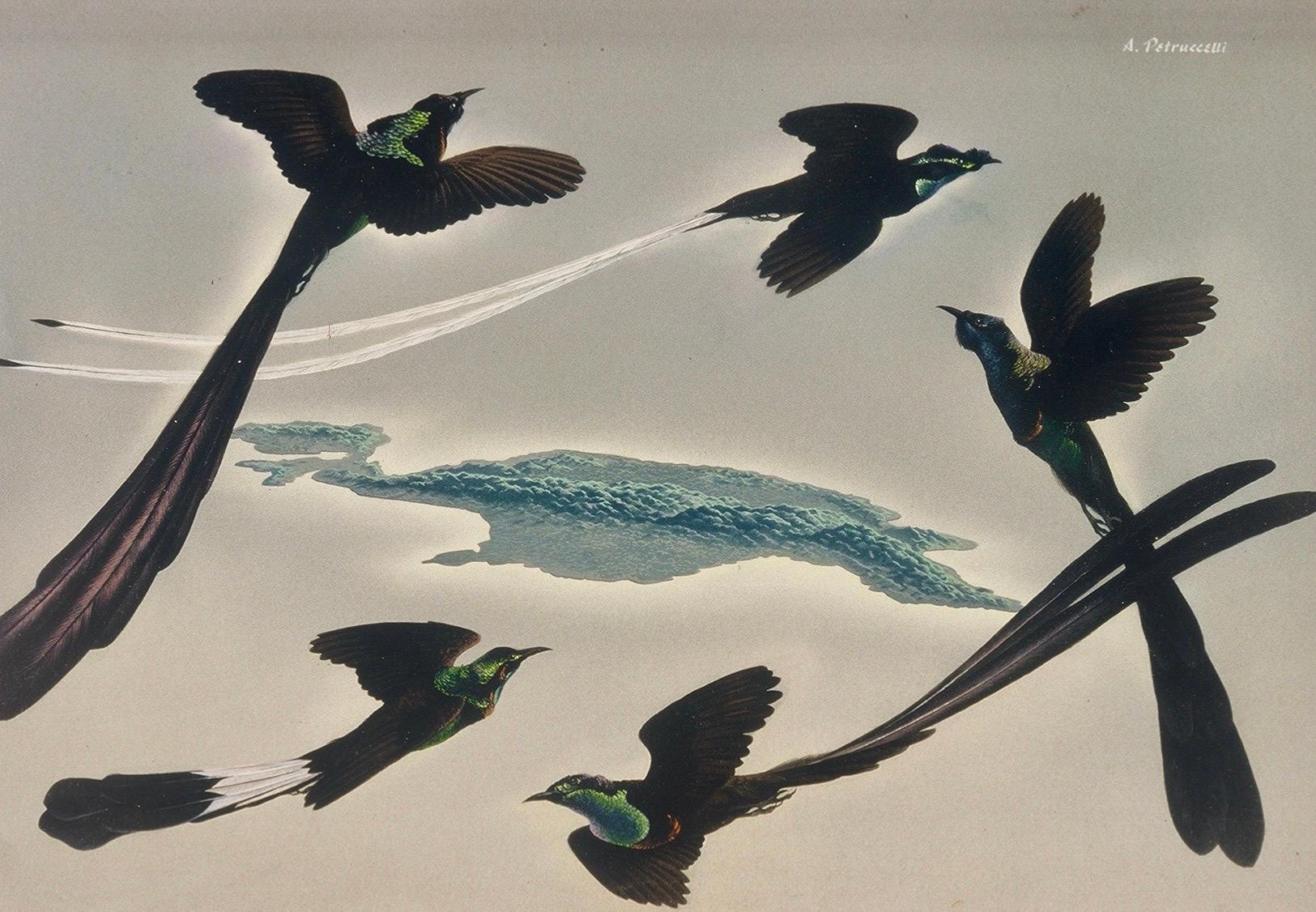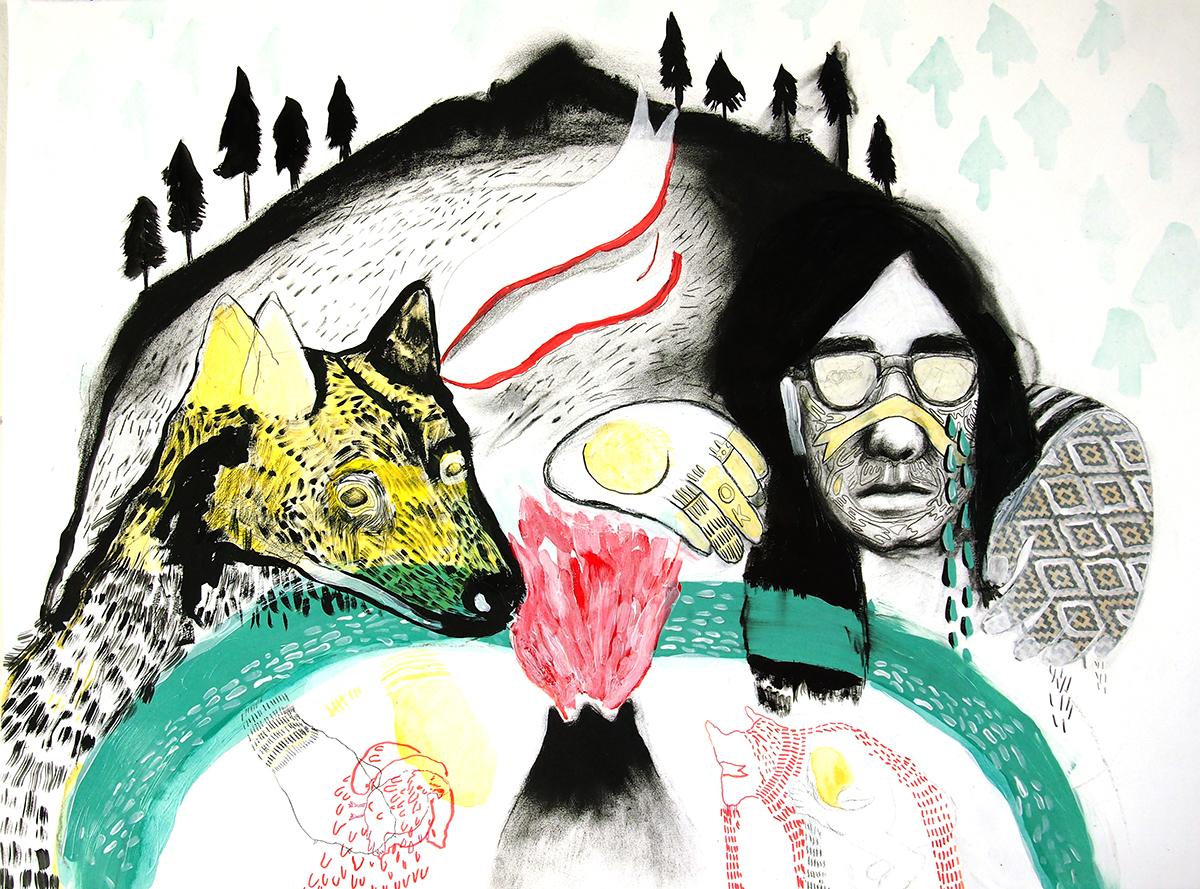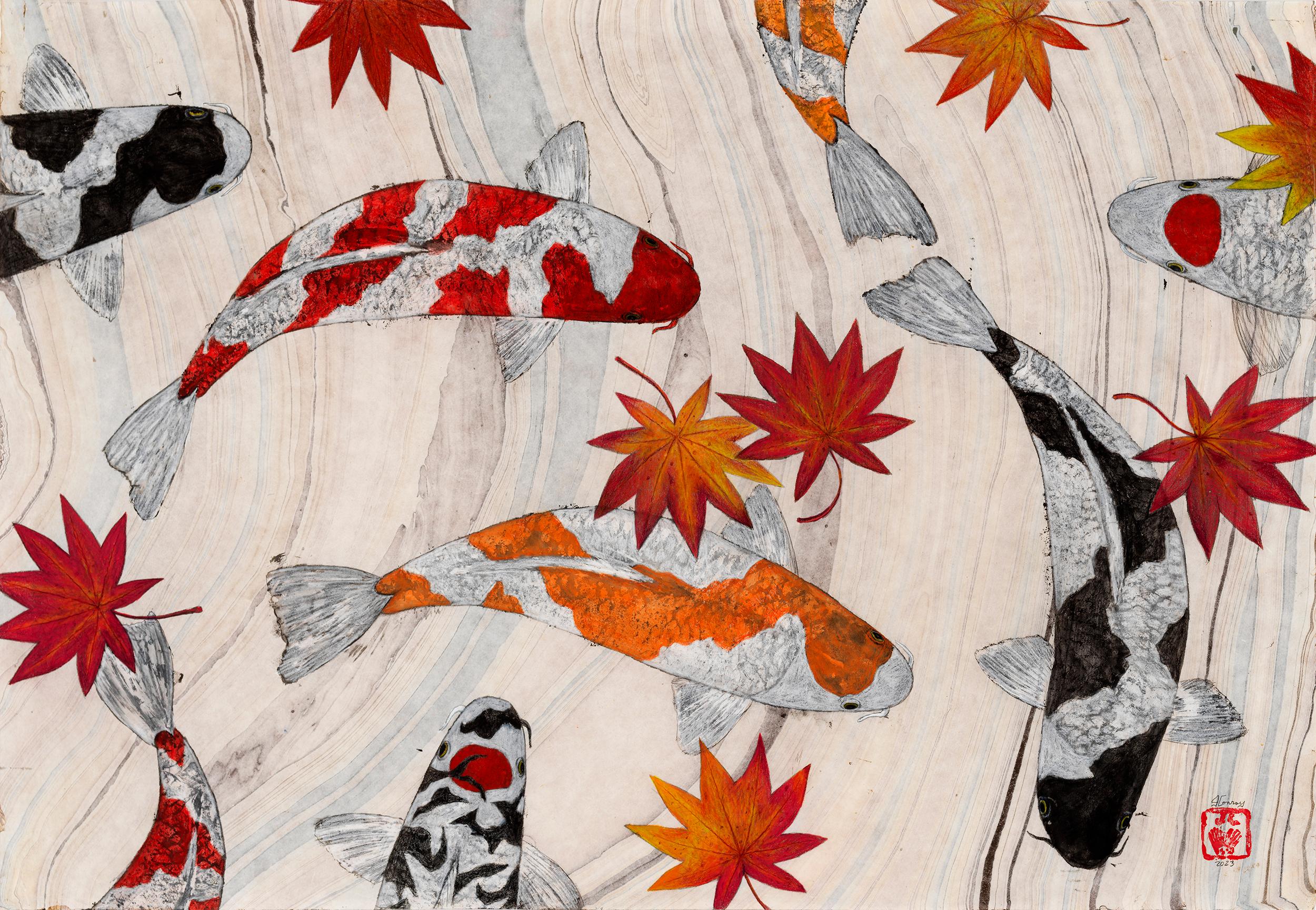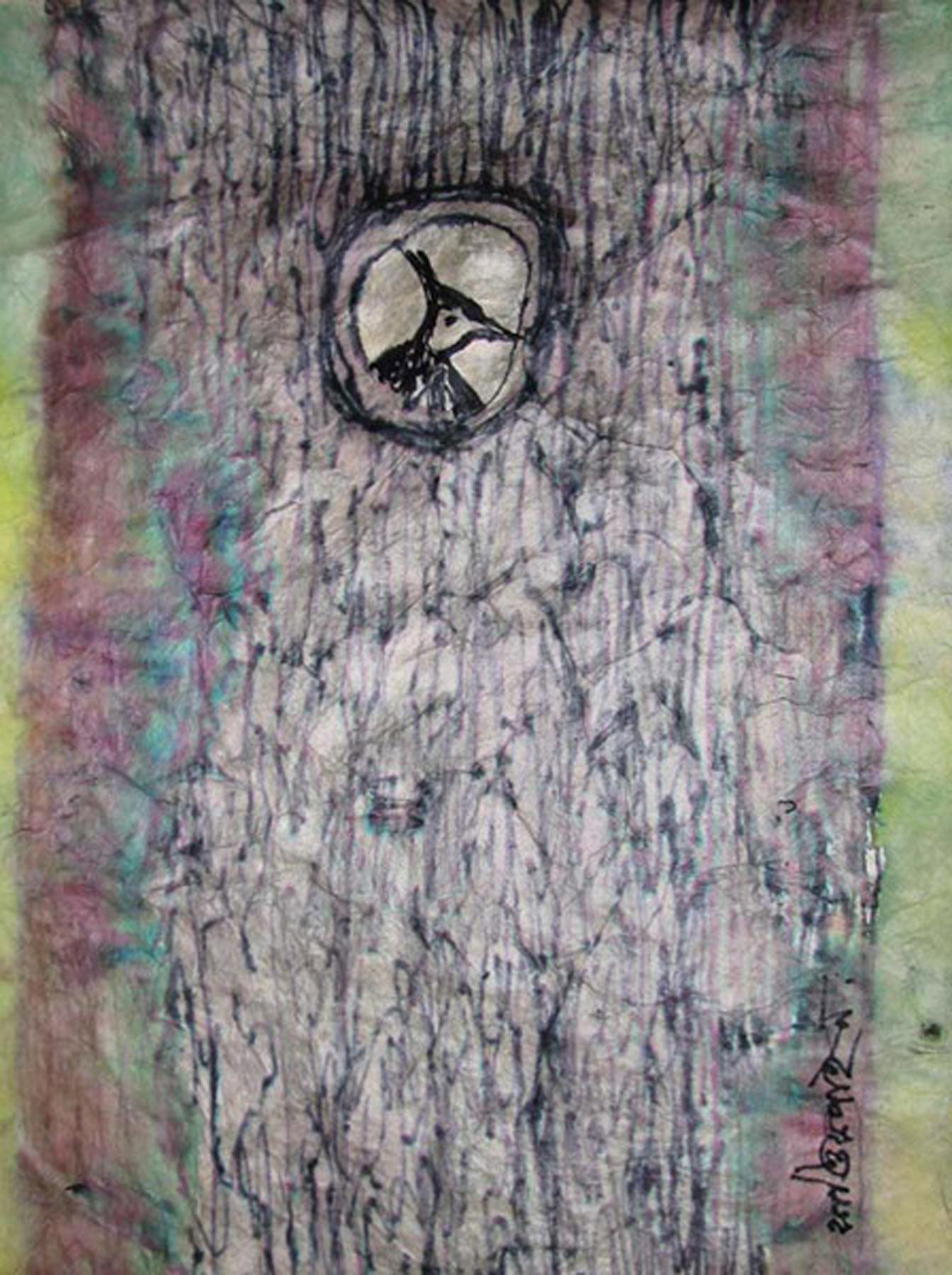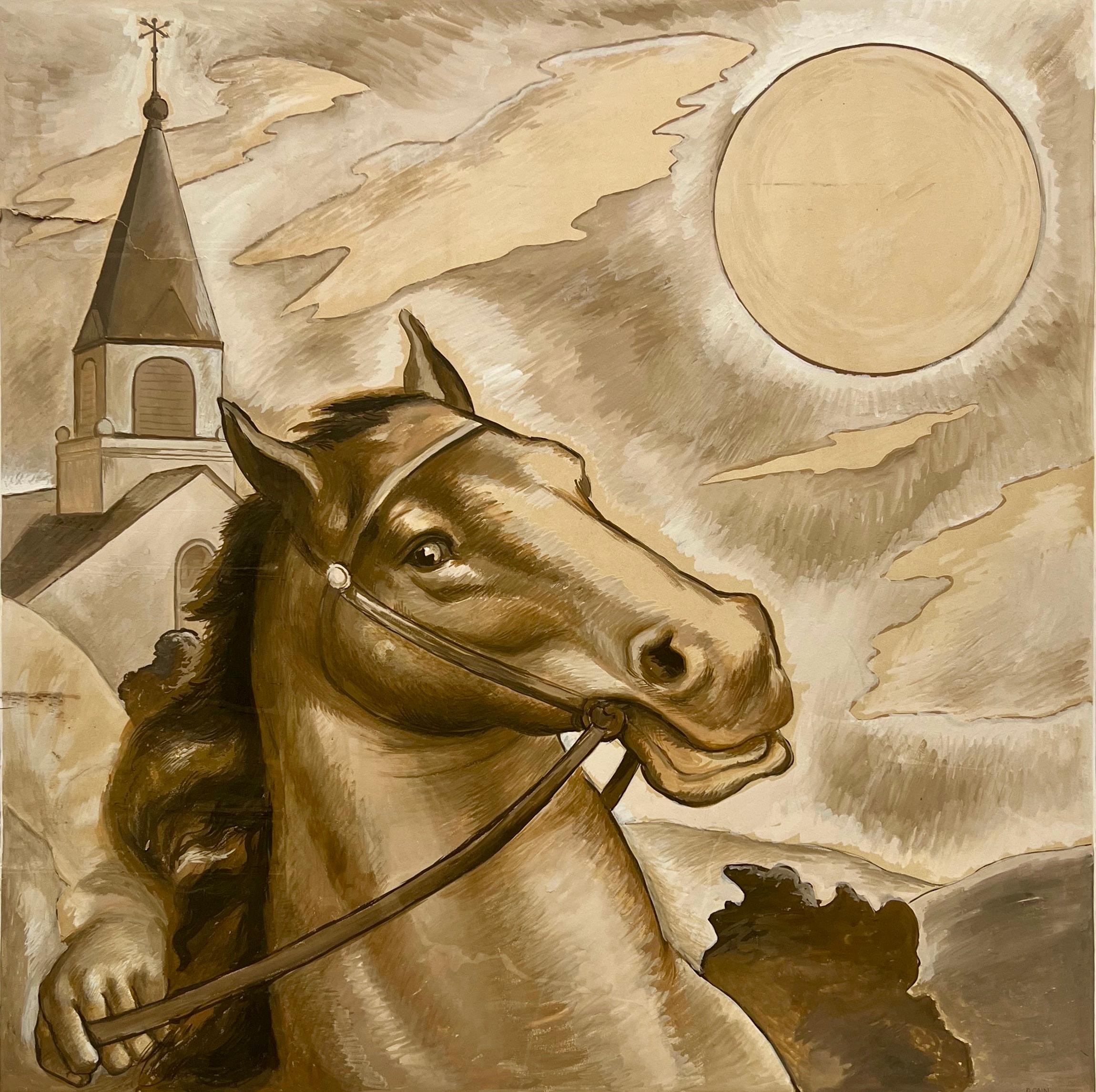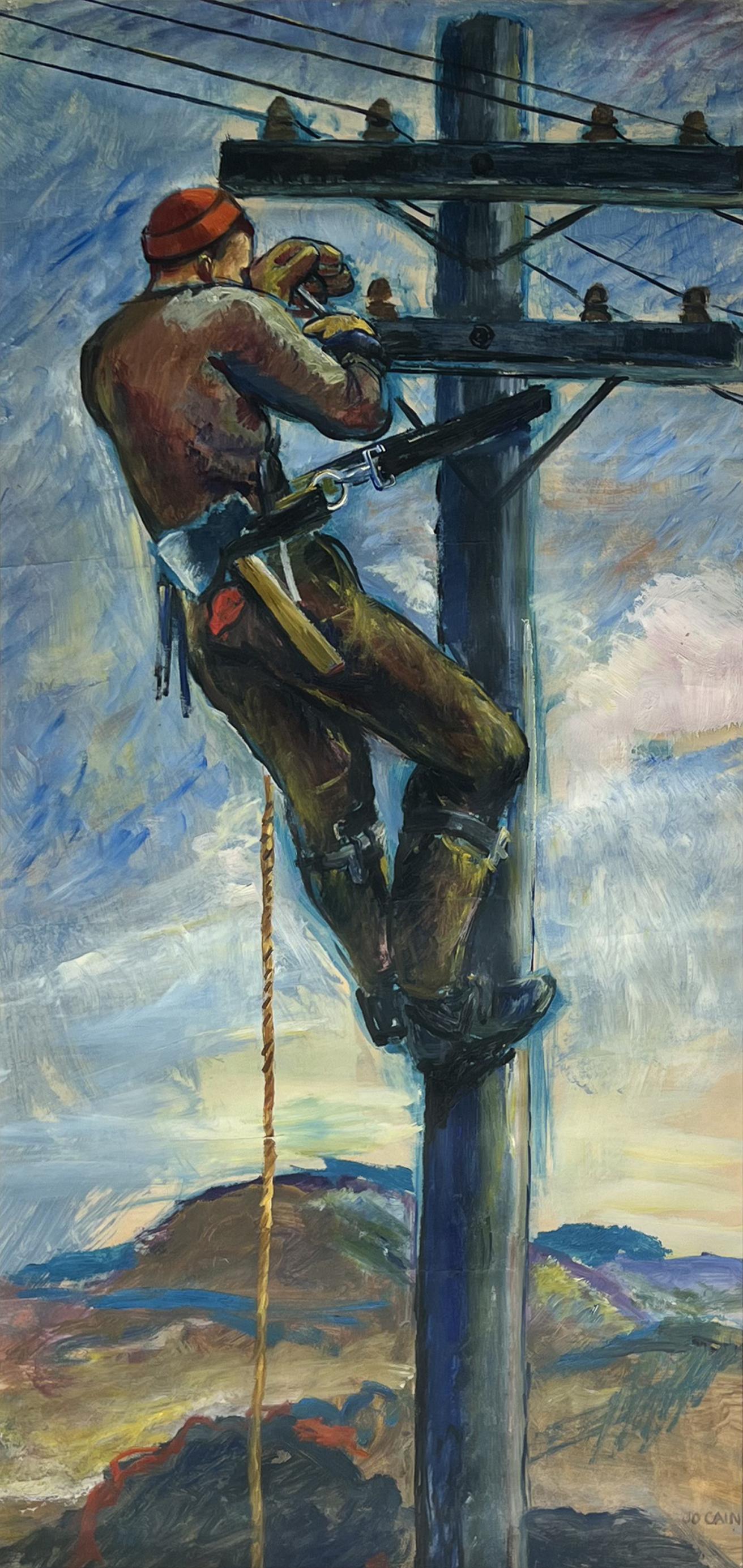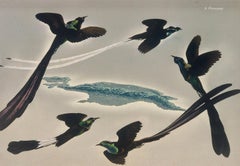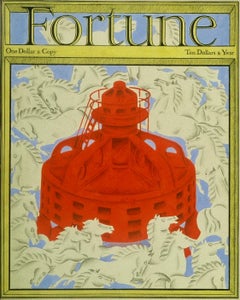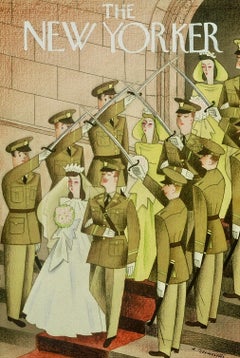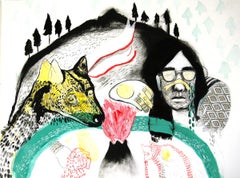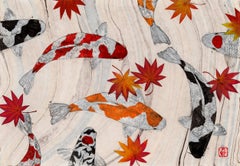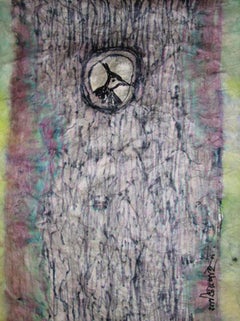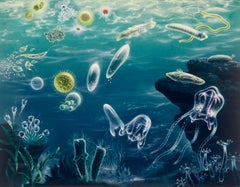
Original Painting. Life Mag Published 1953. Undersea Jellyfish American Scene
Want more images or videos?
Request additional images or videos from the seller
1 of 7
Antonio PetruccelliOriginal Painting. Life Mag Published 1953. Undersea Jellyfish American Scene1955
1955
About the Item
- Creator:Antonio Petruccelli (1907 - 1994, American)
- Creation Year:1955
- Dimensions:Height: 30 in (76.2 cm)Width: 35 in (88.9 cm)
- Medium:
- Movement & Style:
- Period:
- Condition:
- Gallery Location:New York, NY
- Reference Number:1stDibs: LU1156211952512
About the Seller
5.0
Platinum Seller
These expertly vetted sellers are 1stDibs' most experienced sellers and are rated highest by our customers.
Established in 2008
1stDibs seller since 2019
163 sales on 1stDibs
More From This SellerView All
- Original Painting Life Mag Published 1955 Birds Animals Illustration Mid CenturyBy Antonio PetruccelliLocated in New York, NYOriginal Painting Life Mag Published 1953 Birds Animals Illustration Mid Century Antonio Petruccelli (1907 - 1994) The World We Live In Birds of Paradise Life Magazine Illustration ...Category
1950s American Realist Animal Paintings
MaterialsGouache, Board
- Original Painting. Fortune Cover. Sept 1933 Illustration American Modern WPA EraBy Antonio PetruccelliLocated in New York, NYOriginal Painting. Fortune Cover. Sept 1933 Illustration American Modern WPA Era Antonio Petruccelli (1907 - 1994) Wild Horses & Dynamo Fortune cover published, September 1933 13 X ...Category
1930s American Modern Animal Paintings
MaterialsGouache, Board
- Original Painting New Yorker Mag Cover proposal. Army Wedding American Scene WPABy Antonio PetruccelliLocated in New York, NYOriginal Painting New Yorker Mag Cover proposal. Army Wedding American Scene WPA Antonio Petruccelli (1907 – 1994) Army Wedding New Yorker cover proposal, c. 1939 11 1/2 X 8 inches ...Category
1930s American Realist Landscape Paintings
MaterialsGouache, Board
- Bronx Post Office Mural Study WPA Horse Social Realism Mid 20th Century ModernBy Jo CainLocated in New York, NYBronx Post Office Mural Study WPA Horse Social Realism Mid 20th Century Modern Jo Cain (1904 - 2003) Couriers of History Bronx Post Office Mural Study Horse in the Sun (with two ad...Category
1930s American Realist Animal Drawings and Watercolors
MaterialsInk, Gouache, Board
- Industrial Man Working Mid 20th Century American Scene Social Realism Modern WPABy Jo CainLocated in New York, NYIndustrial Man Working Mid 20th Century American Scene Social Realism Modern WPA Jo Cain (1904 - 2003) Hammering Nails 39 x 50 ½ inches Gouache on paper c. 19...Category
1930s American Realist Figurative Drawings and Watercolors
MaterialsPaper, Gouache
- Man Working Mid 20th Century American Scene Social Realism Industrial WPA ModernBy Jo CainLocated in New York, NYMan Working Mid 20th Century American Scene Social Realism Industrial WPA Modern Jo Cain (1904 - 2003) Telephone Pole Worker 38 1/4 x 18 1/2 inches Oil on pap...Category
1930s American Realist Figurative Drawings and Watercolors
MaterialsPaper, Gouache
You May Also Like
- Cry Me a River (a fleuve)Located in Columbia, MOCry Me a River (a fleuve) 2017 cca. Acrylic, graphite, pen, gesso and gel medium on paper 22 x 30 inchesCategory
2010s Contemporary Animal Paintings
MaterialsGesso, Ink, Watercolor, Graphite
- Autumn Cotilion - Japanese Style Gyotaku Painting on Marbled Mulberry PaperBy Jeff ConroyLocated in Chicago, ILIn Japan they are known as Nishikigoi, or living jewels. These brilliantly colored varieties of the Amur carp have been selectively bred by family owned fisheries for generations. When I began this series of Gyotaku (Japanese fish printing) I studied the many varieties of Koi, each with their own unique colors and patterns. My particular favorites are the Tanchos which can be identified by the distinct red spot on their heads. To create these pieces I print common carp I catch myself with sumi ink using traditional techniques used by Japanese fisherman dating back the mid 1800's. I then tint the images using watercolor. In each piece I hope to translate a sense of movement to give the viewer a sense of calm one might experience watching the living versions lazily meandering around a serene pond. —Jeff Conroy Several koi swim in a circle while autumn leaves fall on the surface of the water in this Gyo-tako method of painting by artist Jeff Conroy. After inking and taking impressions of the koi, the artist then uses watercolors to enhance their beauty. By using marbled mulberry paper to print on, he has created the illusion of water with the swirls of the mulberry paper. The paper itself has a soft hue and slightly wavy texture adding the overall feel of the artwork. This artwork is unframed. Contact gallery for framing options. Jeff Conroy Autumn Cotillion sumi ink and colored pencil on mulberry paper 25h x 37w in 63.50h x 93.98w cm JEC103 Gyotaku - A Japanese word translated from "gyo" meaning fish and "taku" meaning stone impression. It is the traditional Japanese method of printing fish, a practice which dates back to the mid-1800s. This form of nature printing was used by fishermen to record their catches, but has also become an art form of its own. Gyotaku is a Japanese method of printmaking that traditionally utilizes fish, sea creatures or similar subjects as printing "plates" in its process. The literal translation of the word is "fish stone rubbing...Category
21st Century and Contemporary Contemporary Animal Paintings
MaterialsSumi Ink, Watercolor, Mulberry Paper
- Birds, Nest, Shelter, Watercolor on Rice Paper, Black, Green, Pink "In Stock"By Kartick Chandra PyneLocated in Kolkata, West BengalKartick Chandra Pyne - Untitled - 18.5 x 14 inches (unframed size) Watercolor on Rice paper. Signed in Bengali. Inclusive of shipment in roll ...Category
Early 2000s Modern Landscape Drawings and Watercolors
MaterialsWatercolor, Rice Paper
- Environmental Prognostication Coil Narrative "Homo Sapiens R.I.P."Located in Miami, FL"They paved paradise and put up a parking lot," Joni Mitchell said. - - Created in 1969, at the dawn of the American environmental movement, artist Richard Erdoes draws a sequential narrative in the form of a coil. From inception to destruction, it illustrates a list of things that humans are doing to destroy the world we live in. The work was commissioned for school-age humans and executed in a whimsically comic way. Yet the underlying narrative is sophisticated and foreshadows a world that could be on the brink of ecological disaster. Graphically and conceptually, this work exhibits an endless amount of creativity and Erdoes cartoony style is one to fall in love with. Signed lower right. Unframed 12.4 inches Width: 12.85 inches Height is the live area. Board is 16x22 inches. Richard Erdoes (Hungarian Erdős, German Erdös; July 7, 1912 – July 16, 2008) was an American artist, photographer, illustrator and author. Early life Erdoes was born in Frankfurt,to Maria Josefa Schrom on July 7, 1912. His father, Richárd Erdős Sr., was a Jewish Hungarian opera singer who had died a few weeks earlier in Budapest on June 9, 1912.After his birth, his mother lived with her sister, the Viennese actress Leopoldine ("Poldi") Sangora,He described himself as "equal parts Austrian, Hungarian and German, as well as equal parts Catholic, Protestant and Jew..."[4] Career He was a student at the Berlin Academy of Art in 1933, when Adolf Hitler came to power. He was involved in a small underground paper where he published anti-Hitler political cartoons which attracted the attention of the Nazi regime. He fled Germany with a price on his head. Back in Vienna, he continued his training at the Kunstgewerbeschule, now the University of Applied Arts, Vienna.[5] He also wrote and illustrated children's books and worked as a caricaturist for Tag and Stunde, anti-Nazi newspapers. After the Anschluss of Austria in 1938 he fled again, first to Paris, where he studied at the Academie de la Grande Chaumiere, and then London, England before journeying to the United States. He married his first wife, fellow artist Elsie Schulhof (d. xxxx) in London, shortly before their arrival in New York City. In New York City, Erdoes enjoyed a long career as a commercial artist, and was known for his highly detailed, whimsical drawings. He created illustrations for such magazines as Stage, Fortune, Pageant, Gourmet, Harper's Bazaar, Sports Illustrated, The New York Times, Time, National Geographic and Life Magazine, where he met his second wife, Jean Sternbergh (d. 1995) who was an art director there. The couple married in 1951 and had three children.[6] Erdoes also illustrated many children's books. An assignment for Life in 1967 took Erdoes to the Pine Ridge Indian Reservation for the first time, and marked the beginning of the work for which he would be best known. Erdoes was fascinated by Native American culture, outraged at the conditions on the reservation and deeply moved by the Civil Rights Movement that was raging at the time. He wrote histories, collections of Native American stories...Category
1960s American Realist Landscape Drawings and Watercolors
MaterialsInk, Gouache, Illustration Board
- San Gio, ComoBy Eleanor Parke CustisLocated in New York, NYEleanor Park Custis painted scenes as varied as the artist's travels: from her hometown of Washington, D.C., to the coastal towns of New England; from the prosperous fishing villages of Brittany, to Venice and the mountain villages and lakes of northern Italy. While Custis's subjects are diverse, her style is consistent and distinctive throughout this body of work. Her use of flat areas of color delineated by dark contours is reminiscent of the aesthetics of woodblock printing. Like many artists of the day, she was profoundly influenced by Japanese woodblock prints, and her adaptation of the aesthetic by 1924 led to her most productive artistic period. Eleanor Custis hailed from a socially prominent Washington, D.C., family. She was distantly related to Martha Custis Washington, America's first First Lady. Custis began three years of formal art training in the autumn of 1915 at the Corcoran School of Art in Washington, and was guided and inspired by Impressionist artist Edmund C. Tarbell, one of the Ten American Painters, who became the Corcoran School's principal in 1918. Custis exhibited widely in many of the Washington art societies and clubs for much of her career. She was also a frequent exhibitor at the Grand Central Art Galleries in New York City; her last one-woman show there was in April 1945. Custis's mature style emerged in scenes of the streets, wharves, and drydocks of seacoast villages from Maine to Massachusetts, which she visited during the summers of 1924 and 1925. She was working in Gloucester, Massachusetts in August 1924, and painted several gouaches of the town's wharves and winding streets, including In Gloucester Harbor and At the Drydock, Gloucester. During her stay, Custis may have met Jane Peterson or at least must have seen her work, the best of which was executed in Gloucester during the preceding ten years. The similarity between their styles is unmistakable, but, while it may be tempting to suggest that Custis was influenced by Peterson during her summer in Gloucester, the connection between their work is probably more a case of shared aesthetics and common European influences. Custis expanded her subject repertoire with three trips to Europe between 1926 and 1929, and was inspired by the Old World charm of Holland, northern France, Switzerland, and Italy, leading to such works as New Kirk, Delft, Holland, Market Day in Quimper, At the Foot of the Matterhorn, and The Town Square, Varenna. A Mediterranean cruise in 1934 introduced her to the Near East, and the bustling, colorful streets and bazaars of Cairo, captured in works like A Street in Cairo, Egypt and A Moroccan Jug...Category
20th Century American Realist Landscape Drawings and Watercolors
MaterialsPaper, Gouache
- Edam, HollandBy Thomas FransioliLocated in New York, NYThomas Fransioli’s cityscapes are crisp and tidy. Buildings stand in bold outline, their forms squarely defined by stark light and long shadows. Saturated color permeates every corner of his canvases, from vibrant oranges and greens to smoky terra cottas and granites. Even the trees that line Fransioli’s streets, parks, and squares are sharp and angular, exactly like those in an architect’s elevation rendering. But Fransioli’s cities often lack one critical feature: people. His streets are largely deserted, save for parked cars and an occasional black cat scurrying across the pavement. People make rare appearances in Fransioli’s compositions, and never does the entropy of a crowd overwhelm their prevailing sense of order and precision. People are implied in a Fransioli painting, but their physical presence would detract from the scene’s bleak and surreal beauty. Magic Realism neatly characterizes Fransioli’s artistic viewpoint. The term was first broadly applied to contemporary American art in the 1943 Museum of Modern Art exhibition, American Realists and Magic Realists. As exhibition curator Dorothy Miller noted in her foreword to the catalogue, Magic Realism was a “widespread but not yet generally recognized trend in contemporary American art…. It is limited, in the main, to pictures of sharp focus and precise representation, whether the subject has been observed in the outer world—realism, or contrived by the imagination—magic realism.” In his introductory essay, Lincoln Kirstein took the concept a step further: “Magic realists try to convince us that extraordinary things are possible simply by painting them as if they existed.” This is Fransioli, in a nutshell. His cityscapes exist in time and space, but certainly not in the manner in which he portrays them. Fransioli—and other Magic Realists of his time—was also the heir to Precisionism, spawned from Cubism and Futurism after the Great War and popularized in the 1920s and early 1930s. While Fransioli may not have aspired to celebrate the Machine Age, heavy industry, and skyscrapers in the same manner as Charles Sheeler, his compositions tap into the same rigid gridwork of the urban landscape that was first codified by the Precisionists. During the 1950s, Fransioli was represented by the progressive Margaret Brown...Category
20th Century American Realist Landscape Drawings and Watercolors
MaterialsPaper, Gouache
